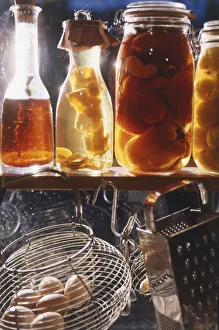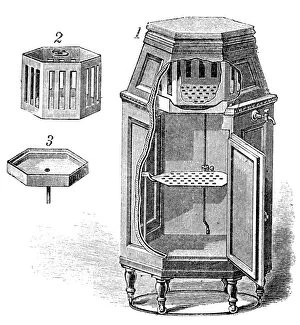Larder Collection (page 3)
Step into the world of larders, where history and functionality intertwine
All Professionally Made to Order for Quick Shipping
Step into the world of larders, where history and functionality intertwine. From meat safes to the Queen Mary's Amazing Larder, these storage spaces have played a vital role in preserving food throughout time. In 1954, an advert statement highlighted the significance of larders during butter rationing. As households faced scarcity, larders became essential for storing precious supplies like Crawford's Shortbread. But it wasn't just about food preservation; larders also offered creative possibilities. In that same year, DIY enthusiasts explored various ideas such as vacuum cleaner storage racks and even transforming a larder into an office area or a "husband's corner. " The Duke of Fife's game larder from 1881 showcases the grandeur associated with these spaces. Painted by G Durand, this artwork captures the opulence and importance placed on preserving game meats. Moving across continents to South Hill House in Somerset, we find another example of a well-stocked larder. This location served as a testament to how families relied on their provisions stored within these rooms. Venturing into photography, Dorothea Lange captured storerooms and cellars in different parts of America during the Great Depression era. Mrs. Granger's storeroom at Yamhill farms showcases resilience amidst hardship while tent interiors in Santa Clara County reveal humble living conditions. In Gem County, Idaho, Roy Carlock was part of Ola self-help sawmill co-op—a community that understood the value of collective effort when it came to sustenance during challenging times. Meanwhile, Mrs. Wardlow had an impressive collection of 500 quarts of food stored in her dugout cellar at Dead Ox Flat in Oregon—an embodiment of preparedness and self-sufficiency. Lastly, Mrs. Botner arranged her storage cellar at Nyssa Heights with care and precision—showcasing how organization played a crucial role in maximizing the potential of these spaces.













